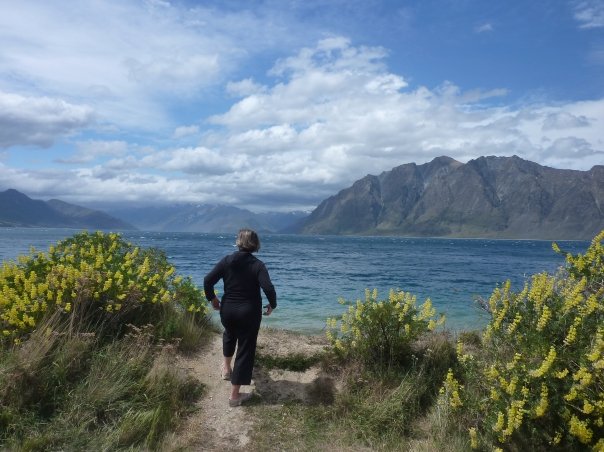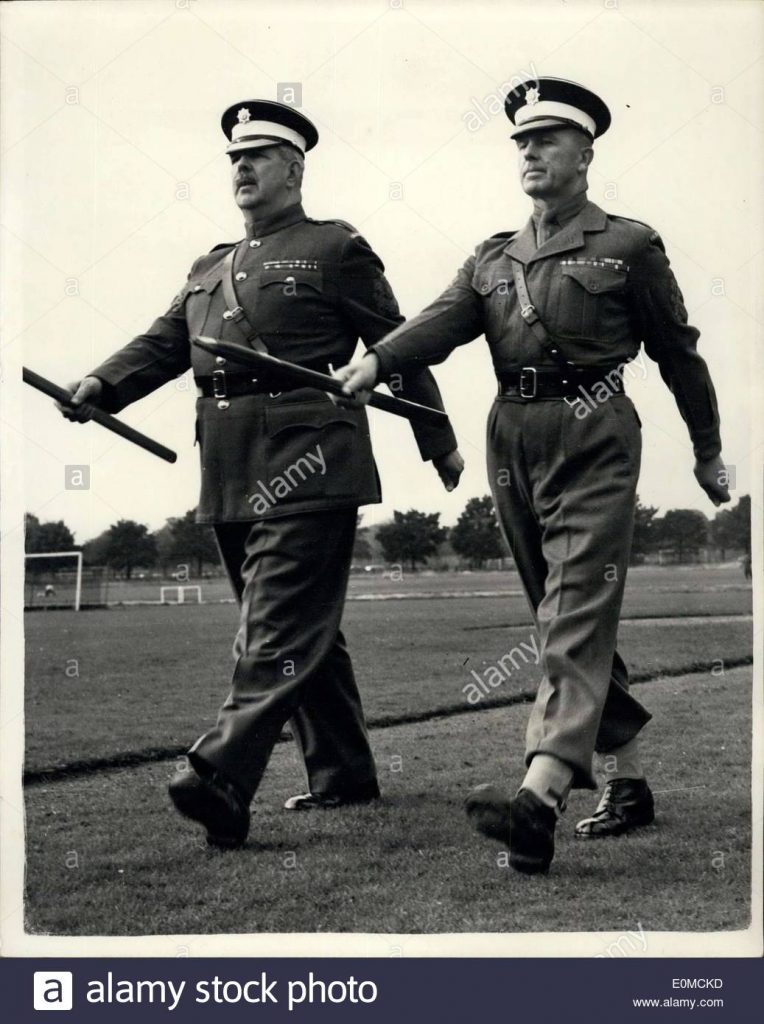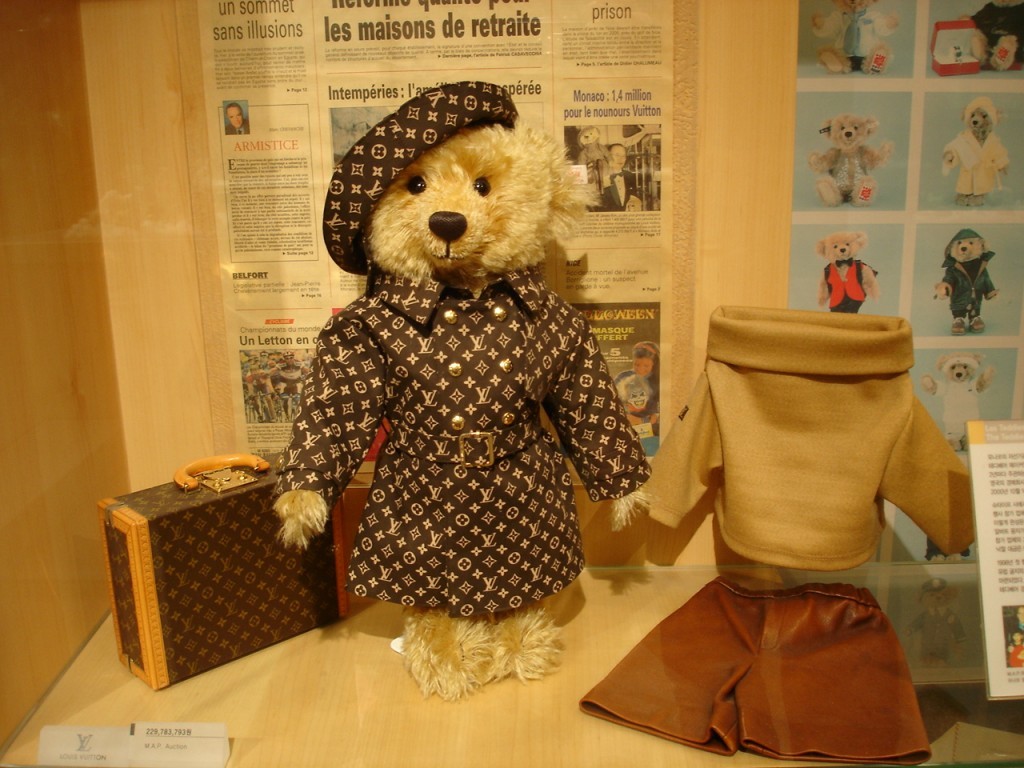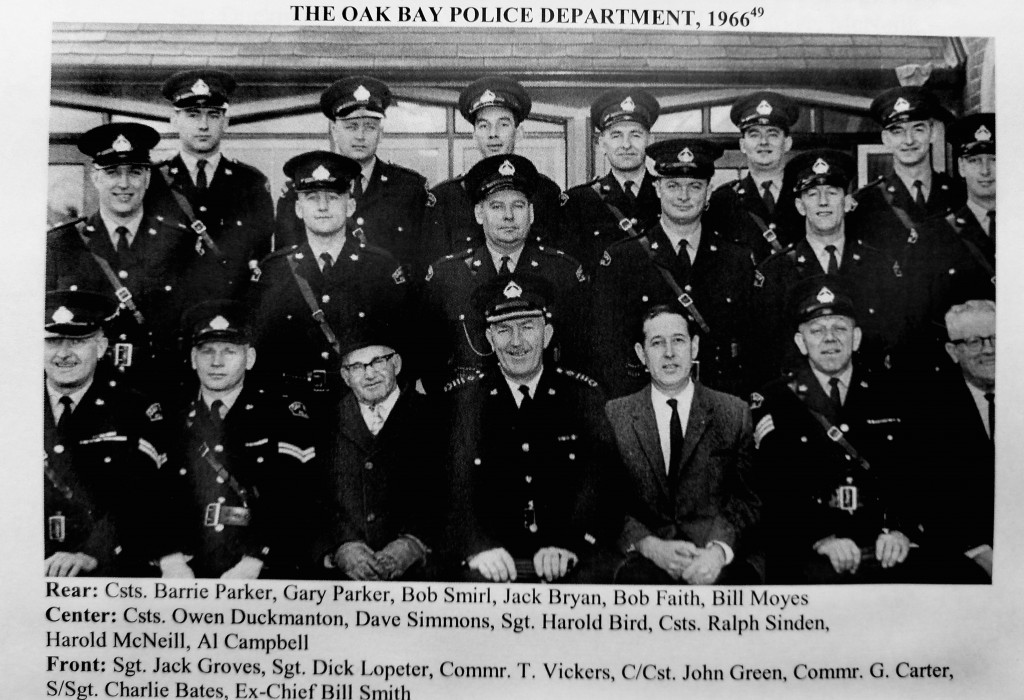Author Archive
New Zealand: Heading into Queenstown

The weather continues to clear and warm as we move inland toward Queenstown. The mountain roads present incredibly beautiful scenes that would rival anything we have seen elsewhere in the world including Canada. While the roads are very good, we must continue to negotiate switchbacks that always take us two kilometers forward and one kilometer back. The nice part of this is that it gives you a chance to see every scene from a 360 degree perspective.
We pass through gold mining towns and sheep stations that provide us with some insight into the challenges faced by early settlers that first moved into this area. I don’t think even the local Maori people even spent much time in many of these areas.
We take a secondary highway through a place called Cardrona and not long thereafter navigate a mountain pass that is reported to be the highest paved road in New Zealand. We stop at a pullout near a lone dead tree and continue on foot, climbing another 500 meters on mountainsides covered with tussock grass. Along the way we pass one small communite called, of all things Athole, another called Bush! Apparently someone loved one of the US Bush boys as they removed Pine from the name.
(317)
New Zealand: To the South Island
Our travels in the North Island have pretty much wrapped up and we are now headed south. The weather turned blustery as we near Wellington and continued for several days through to the Fox Glacier. The ferry was as modern as any we have in British Columbia however the waters through which it travels is subject to severe storms. The ferry crossing was rough as you will note in the photos but we snagged front row seats in the passenger lounge with movie and, if we had wished, alcoholic drink. None of this dampened our spirits as there were so many sites to see.
Once off the ferry, we travelled south along the West Coast on roads that were almost devoid of traffic. Throughout NZ there are hundreds upon hundreds of one way bridges each of which has it’s own personality and the switchbacks on the narrow mountain roads have now become a way of life.
It seems that the north part of the South Island provides challenging life for those who desire to live in that rather remote area. As about 75% of Kiwi’s live in the North Island and the majority of those who live in the South Island occupy the main cities along the more temperate East Coast.
Never-the-less these hearty soles are a most welcoming people and no matter were we stay we always end up meeting people anxious to know more about Canada and Canadians and each of whom are eager to share a bit of their life story.
West Coast, South Island
New Zealand, 2009
Note: Photo (below) comments will be added. It seems they were lost in the blog transfer. hdm
(358)
New Zealand: The Magic of Rotorua
“He kakano ahau, ruia mai i Ranglatea” (I am a seed, scattered from Raniatea) and so Lynn and I entered “the magical world that was home to the Patu-paikarehe fairy people who lived off the products of the forest and the inanga (whitebait) that thrived in Lake Rotorua” (Fairy Folk of the Ngongotaha Mountain by Mrs. EC Cowan).
It has taken us over fifteen years, but we finally arrived in Rotorua to visit with David and Gill Russell and were made to feel as welcome in the Russell home as at any home in our lives. Over several days, we shared stories and pictures of our families and lives.
David and Gill also compiled a list of attractions to visit while in Rotorua. This city of 68,000, which attracts over 3 million visitors per year, is a wonderland of tectonic and volcanic activity that gives just a tiny insight into the world that existed millions of years ago. The hundreds of ocher stained streams and rocks and the magnificent emerald, green and blue lakes, stretch for hundreds of square kilometers. Downwind, the strong smell of sulfur wafts through the air. There are no “sinus” blockages in Rotorua.
(386)
New Zealand: The North Island
Note: The New Zealand Travelogue series is from a tour Lynn and I made just before Christmas 2009. First posted live to Facebook it is being reposted here along with more photographs taken during the trip.
We have been told that New Zealand is a kaleidoscope of ever-changing scenes and our first three days touring the coastal route north from Auckland to Paihia, then across the top to the West Coast and Tasman Sea, provides ample confirmation.
Along the “car rally” coastal route, new and stunning vista’s greet us as we round each curve and top each hill. Finding a safe place to stop to grab a few pictures is a challenge as their are few road-side view points. Even at that, Lynn is beginning to think I am going to wear out my camera before we even get started. It is indeed a good thing I bought that extra 8 gig card and spare battery.
Along the east coast we see the first samples of lush tropical vegitation that we discover covers much of New Zealand and as we approach Paihia, the South Pacific to the east is filled with thousands of Islands. We could not find a viewpoint at the highest points so grabbed one photo from the Web to give you a sense of the sights we see in an area called the “Bay of Islands”” (Opening Photo of this Post)
(348)
Oak Bay High School Confidential
The Case of the $20,000 Teddy Bear
This Teddy Sold for £130,190 on 14th October 2000, even though it was slightly smaller than the $20,000 Teddy that was part of an Oak Bay Heist.
Prologue
As affluence tends to define Oak Bay, at least in the eyes of outsiders, there is no better place to continue this series, than with a case about money, a lot of money, well, a lot of money for several dozen Oak Bay High School students.
Who would expect, that over a few days, early one spring, we would learn of parties at which $100 bills were being used to light cigars, stores where students were paying $500 for sport cards, and, of parents being given $100 bills by their kids, all with few questions being asked. Sound a bit far-fetched? Perhaps, but remember, this was Oak Bay and in Oak Bay, anything could happen.
The case developed, first by the keen observation of a fellow officer, and then, by information which pointed to three groups of students, who, in this story, we call the Uplands, Panhandle, and Rockland Boys. The Robin Hoodesque generosity of the three groups played a key roll in the distribution of tens of thousands of dollars throughout the school. What was going on? Had they opened up a counterfeiting ring in the school shop or had they found a bank vault left open along Oak Bay Ave? Not even close. The truth is even more interesting than fiction.
(1021)
Tickets, Tickets, Tickets 4/4

(Stock Photo) Many RSM’s marched out of the military and into the police service in the decades following World War II and the Korean War.
Go to Different Strokes for Part 1
How might you handle a bully, especially a bully with gold braid surrounding his epaulets? Well, you could challenge him directly, but there were inherent dangers with using that approach. Perhaps it would be wise to take a more circuitous route. The challenge I made in this story would only be the first of many times I stepped over the line when feeling chaffed by the actions of a senior officer. Over my thirty years of service, I managed to turn the art of challenge into a science, but there was a cost.
As mentioned in the previous story, our Chief Constable back in the late 1960s, was a notoriously dictatorial fellow. At 6’4 inches, 260 pounds, in excellent shape and with a deep baritone voice, he was a formidable sight, especially to a lowly, Junior Constable.
That he brought to the Police Department his full military bearing as an ex-Regimental Sergeant Major (minus the swagger stick), left him a bit out of touch with the rapidly changing world of policing. Given his personality, one only challenged the Chief’s authority at their peril.
(472)
Please Send a Car 3/4
S/Sgt (later Inspector) Charlie Bates (front row, second from right)
(Served with the Oak Bay Police, 1946 – 1976)
Go to Different Strokes for Part 1
Part 4 Link to Tickets, Tickets, Tickets
Once again, better judgment failed to penetrate my clouded brain as I picked up the phone and called a taxi. While it seemed funny at the moment, after hanging up the phone, I wondered whether the Inspector would appreciate the little joke.
Throughout these stories, I will intersperse a number of anecdotes such as this. Each has more to do with explaining the camaraderie that exists within a small department that might not be tollerated in a larger organization. Yet, in every department, whether large or small, men and women must learn to work closely in order the gain the trust needed to accomplish the job in an effective manner. At times this involved black humour that outsiders might find offensive, at other times practical jokes carried the day (or night) and very often, spending time together in social situations where families came to understand the broad support system that existed within and across police forces in the CRD1.
With a few exceptions, senior ranks were not immune to being the brunt of a practical joke and in this case it involved the 2 I/C of our Department, Inspector Charlie Bates.2 Charlie was one of the most knowledgeable, honest and straightforward men of senior rank I had the pleasure to work with over my early career. He certainly provided much needed balance to the dictatorial, ex-Regimental Sergeant Major who was then our Chief Constable. Inspector Bates, however, subscribed to the old school motto: “rank hath its privilege”.
(418)
Attitude, Attitude, Attitude 2/4
Domestic Disputes: These disputes can be among the most difficult and dangerous calls to attend.
Note: This is Part 2 of the series. Go to Different Strokes for Part 1
Introduction
The Saanich PD Constable stood in the living room of a Cadboro Bay residence facing down two angry people. It was evident by his words and actions that this meeting was not likely to have a happy ending. Meanwhile, his Sergeant was sitting, watching and waiting as chaos slowly enveloped the scene.
There was obviously more to the Sergeant’s inaction than I could at first discern. As I had just arrived on the scene as a back-up, it would take a few minutes to understand why the Sergeant was waiting and watching. We struck up a conversation and both watched through the picture window facing the street.
The reason I was here, is that with three borders (Oak Bay, Saanich, and Victoria) we always covered for each other on such calls as we all knew officers could end up at the scene alone. As our radio systems were on the same channel, we always knew what was going on in each others territory.
The Call
When I arrived, two Saanich police cars were parked on the street with the Saanich Sergeant quietly sitting in his unit. The engine was off and he was having a cigarette as I walked to the driver’s door. I didn’t even have to ask if they needed help as that was obvious. Through the picture window of a house across the street, we could see the another Saanich officer, (he had arrived before the Sergeant) who was standing in the living room facing down a man and woman who were in the midst of a heated argument.
(2535)



